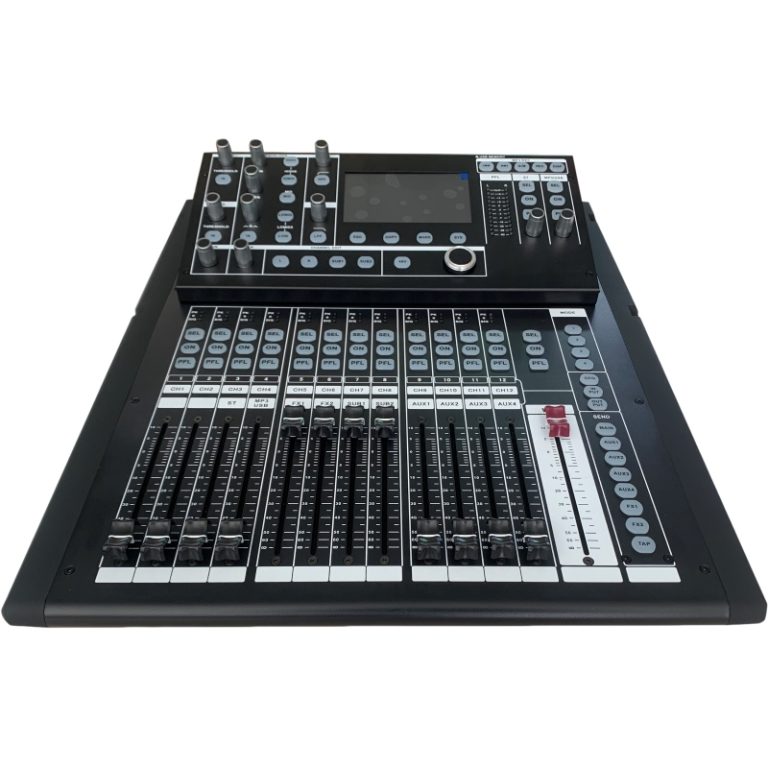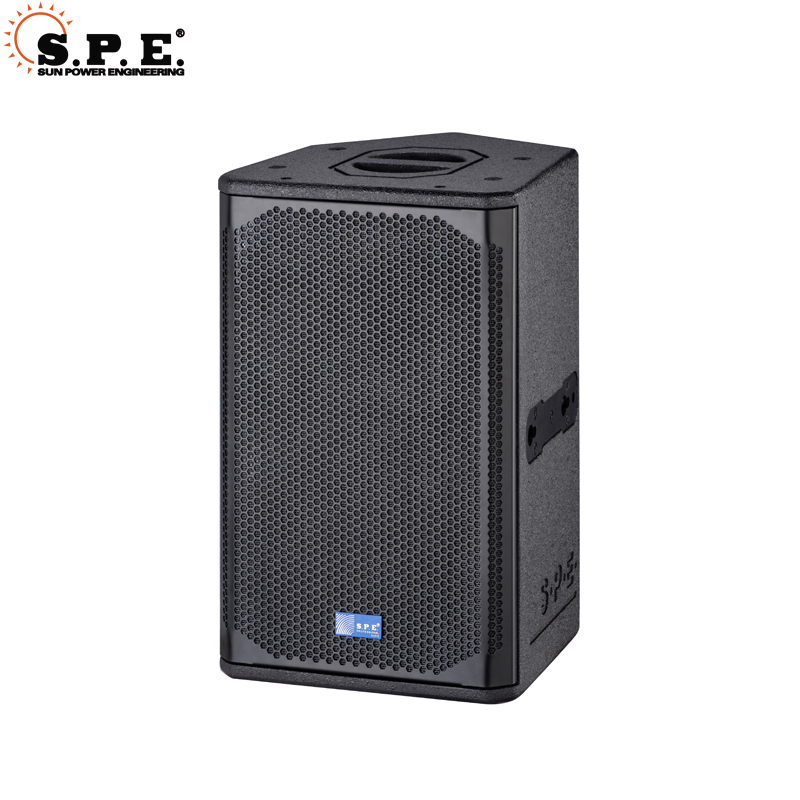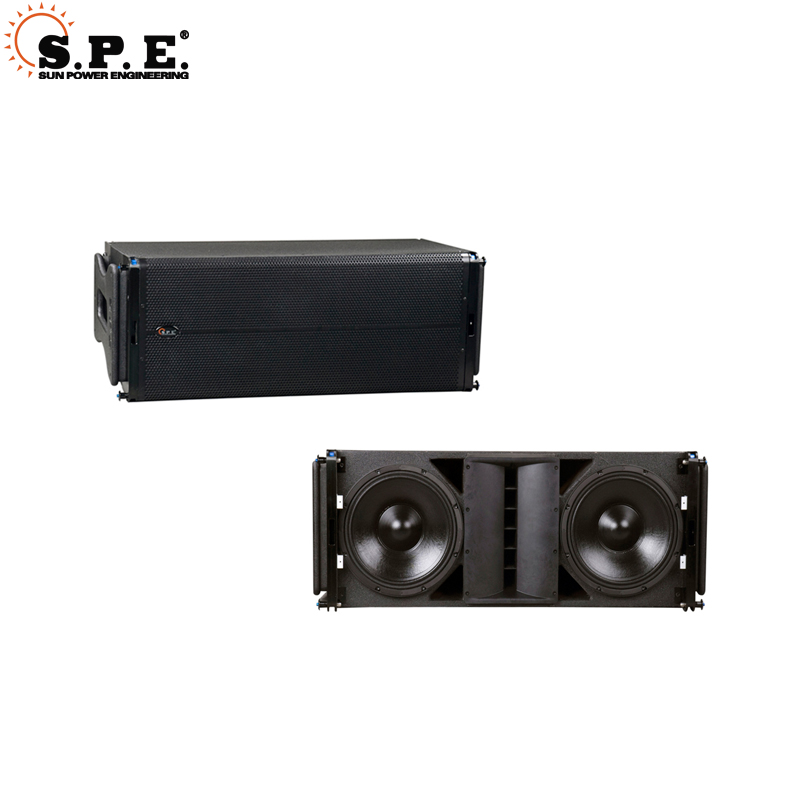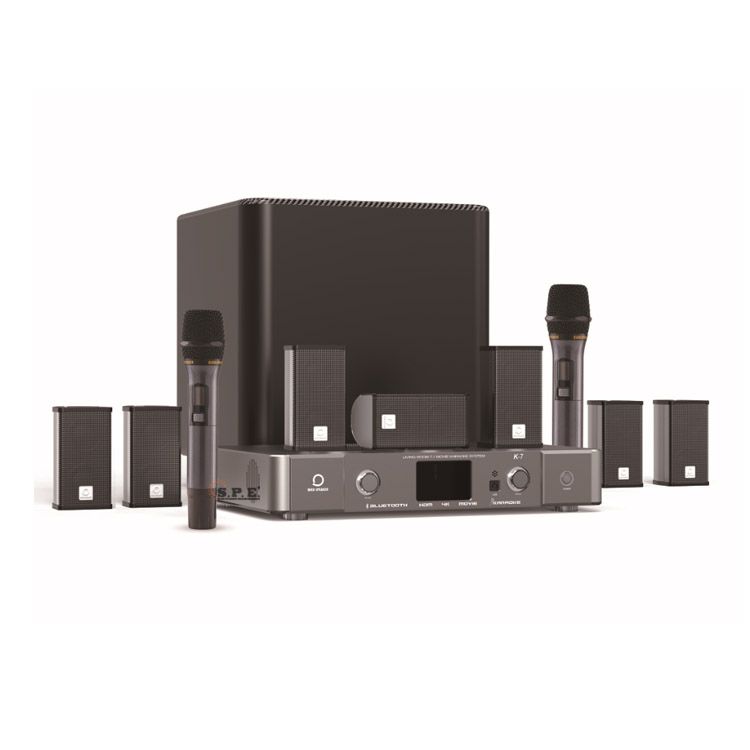Digital mixers can be used in a wide range of performance settings. But how do you know what size and type of mixer to buy for your venue?
Start by assessing your facility’s needs. You should ask yourself how many inputs are needed and whether audio processing, such as effects or EQ, is required.
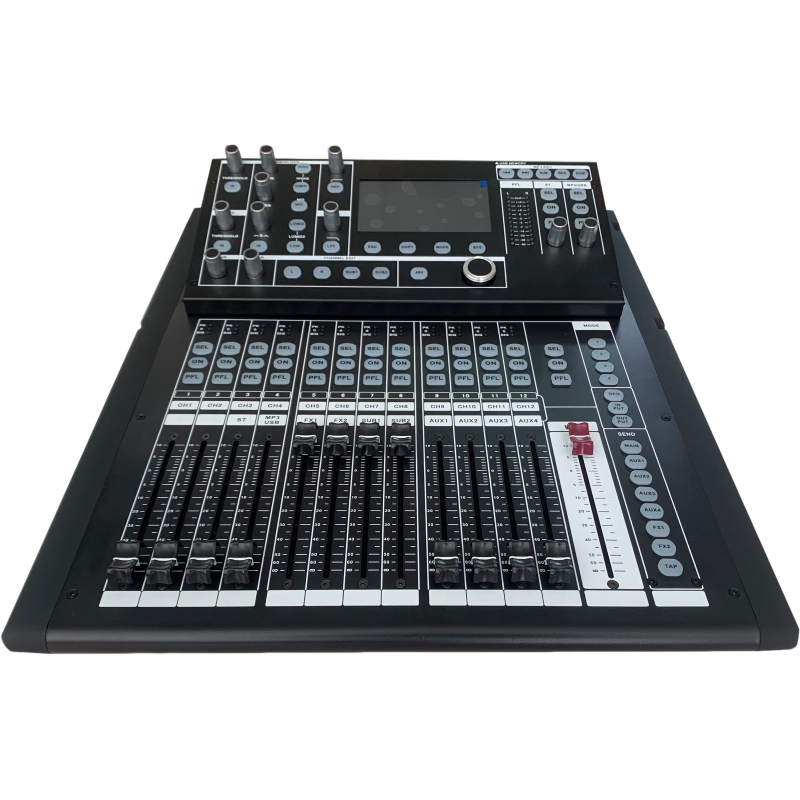
Inputs
For mixing flexibility, on-board effects and recording, a digital mixer 16 channel is hard to beat. The advanced circuitry of the digital mixer can activate preprogrammed effects and routing that are difficult to achieve manually with an analog audio mixing console. Many digital mixers include built-in sound processing that can do everything from ride herd on dreaded feedback to add the desired sheen to vocals.
Inputs and out put can be routed a number of different ways depending on what the mix needs are. For example, each mixer channel can have a dedicated microphone input with its own XLR jack, while other channels have their own auxiliary send XLR jacks that are fed by the channel faders and contribute to a main mix bus. This main mix bus is then sent to speakers, or even a recording device. Auxiliary sends can be sent to multiple speakers or other destinations.
Digital mixers also have the capability to reroute the inputs and out put with the push of a single button. This is much easier than physically changing connectors at the back of the console. The mixer can be easily and quickly configured to meet specific requirements.
The meters on most mixers show the levels of the incoming signal at different stages of the flow of the signal, giving an operator a clear visual of the overall level of the signal. The meters are usually green, representing a clean, healthy signal. Yellow or red is displayed at the very top to show clipping.
Some mixers such as StudioLive 16.0.2 USB by TASCAM offer an intuitive and familiar user interface, which keeps important controls visible and easily accessible via a large touchscreen. These features include motorized channel faders in two banks of eight, a viewable meter panel for each bank of faders, and easy-to-see function buttons and rotary controls.
Outputs
The outputs on a digital mixer are used to send the mix to speakers and/or an external recording device. The outputs can be routed in a variety of ways, and the mix can be controlled via the channel faders or auxiliary bus (sometimes called pre-fader sends).
Onboard signal processing is also available in many digital mixers. This can be used to enhance the tone of your mix. Typically, the processors are in the form of channel inserts that allow you to plug in external sound processors like compressors and equalizers. The mixer then applies these to the channel input before sending it to the main or headphone outputs.
In addition to the usual EQ and dynamics control, most digital mixers offer a number of other built-in audio effects such as delay, reverb, chorus, flanger and de-esser. These can be applied to individual channels or grouped channels, and they may also be side-chained or added as an effect to the channel insert.
It’s important that you can understand the meters of a digital mixing device to know what is happening. The meters indicate levels of input to the mixer, output from a specific channel, and other important information. Meters can be mono or stereo, and they’re usually color coded with a bright display to make them easy to read from a distance.
Most digital mixers also provide a mute function to silence a group of channels at once, which can be helpful when making onstage announcements or changing settings. Some mixers also have a group function, which allows you to easily and quickly configure multiple groups of muted and non-muted channels. Some of these configurations can even be saved as user presets.
EQ
The EQ capabilities of a digital mixer can be as basic or complex as you need them to be. Multiband parametric EQ is often needed if you intend to use your mixer in studio recordings. However, if you are planning to use the mixer mainly for live-sound applications, a simpler EQ may suffice. The quality of the mic preamps, along with bus and signal routing abilities are also important.
A digital mixer for live sound should have enough connectivity and processing power to accommodate your whole band. Most importantly, it should have high-quality microphone preamps that are capable of delivering very clean, distortion-free output. A large number of auxiliary busses (main and monitor) is also a plus. Some mixers come with HARMAN Signal Processing from dbx DigiTech Lexicon, which enhances the tone, clarity, and consistency.
Another essential feature of a digital mixing system is the onboard effects processor. Some include reverb, delay and chorus effects that give your music a polished professional sound. Others have a range of sonic filters that help you shape your vocals, guitars and other instruments to give them a more unique sound.
Digital mixers with a variety of features are a great tool for small venues, musicians, and AV professionals. The compact and portable mixer can offer mixing flexibility, multitrack recording, motorized faders, all in an easy-to-use package. Some models even go “beyond mixing” by offering wizards, presets and other useful tools that can save time and effort for both seasoned pros and novices alike.
Effects
Digital mixers offer a variety of features and options. The Soundcraft Ui16 mixer, for example, has many features, such as built-in signal processing from dbx or Lexicon. The mixer has balanced XLR, 1/4″, and line inputs. It also includes USB audio for your computer and inputs to turntables or CD players. You can control the mixer using a WiFi controller.
One huge advantage of a digital mixer is that you can save and recall your setup using USB or internal memory. This makes it easy to set up in new locations and helps avoid costly mistakes. Most digital mixers have motorized faders which respond to preset configurations. This saves you even more time during sound tests.
Some digital mixers feature effects built in, which can add a whole new dimension to your sound. Depending on the digital mixer, these may include things like reverb, delay, flanger, chorus and more. A good digital mixer will offer a range of effects that can be used in different ways to enhance your sounds and create the perfect sound for each performance.
Some digital mixers will also have a feature called summing, which adds warmth to what some engineers consider to be the cold and clinical sound of final digital mixes. This can make the difference between a professional sounding mix and a mix that sounds amateurish or unprofessional.
Say the last words
It’s best that you spend time exploring both the user interface and the layout of the mixer on the website before making any final decisions. It’s also a good idea to arrange a demo or attend a trade show where the mixer is on display. This will give you an opportunity to get familiar with the mixer’s workflow and make sure it is a good fit for your style of working, whether that’s primarily hands-on knobs or touchscreen control.
A digital mixer should also offer automation. Some are designed to record and playback multi-track audio to a computer for use in post production. These can offer advanced features like scene recall, automatic gain control and dynamic processing.
Some digital mixers also include a variety of built-in effects that can be applied to individual channels, group buses and the master mix. Examples of common effects include a gate, compressor and EQ. The gate is used to reduce unwanted noise, by effectively muting the channel when it falls below a threshold. A compressor controls the output of the channel so that the level matches a preset target.
Some digital mixers can be connected to Wi-Fi routers, and controlled by iOS or Android devices. This lets you move around the room and adjust faders or even apply effects while the mixer is beside you, which can be a big help when setting up for a performance. The Ui Series mixers, for example, provide full cross-platform compatibility and support up to 10 control devices simultaneously. They also feature built-in HARMAN signal processing from dbx, DigiTech and Lexicon, including dbx AFS2, compression, de-esser, 4-band parametric EQ and high-pass filter on input channels.

